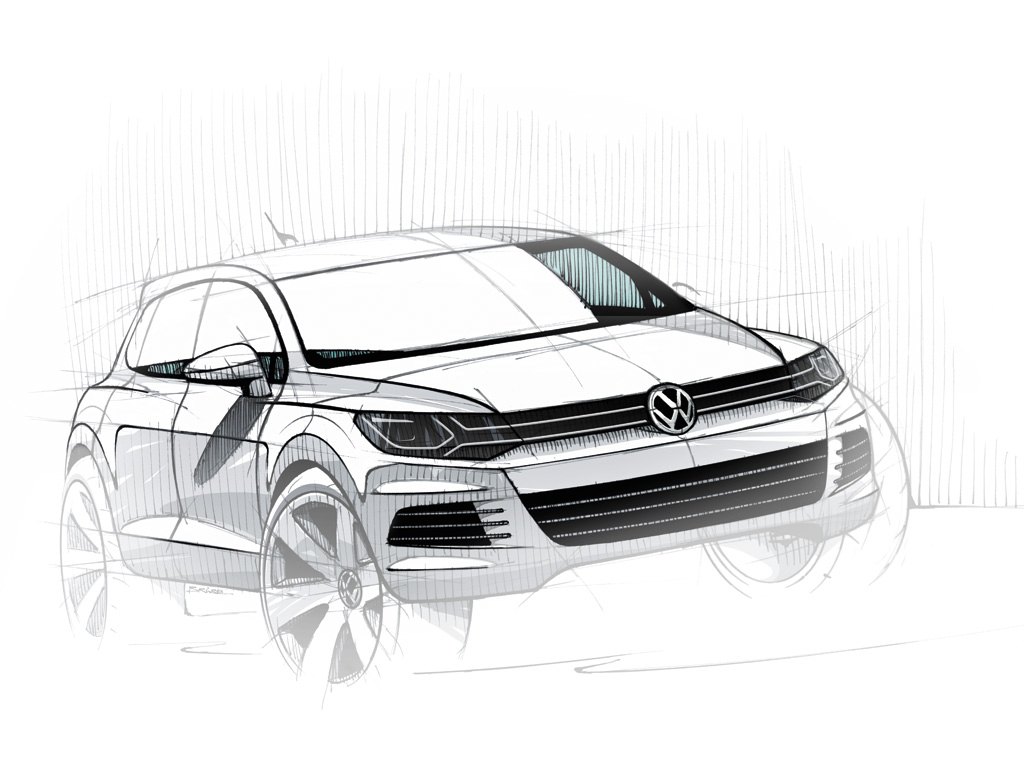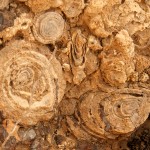This is a fresh and previously un-published trip exclusive to weekenduae.com
Fossils abound in the entire Arabian peninsula, and I remember marveling at finding seashells in the outskirts of Riyadh as a child – wow! how did these get here? Happily, the older mountains of the UAE, especially the sandy-colour crumbly ones usually found where the sand dunes meet the darker, sharper, newer mountains of the Hajar range, are full of fossils!
And this trip will take us to a very special place in between Madam Roundabout and Maleiha, in Sharjah, where a large cliff-face has collapsed from the escarpment, leaving exposed large chunks of fossilized coral and the sediment layers that were covered millions of years ago. If you have a geologist friend, this is the trip to take them along.
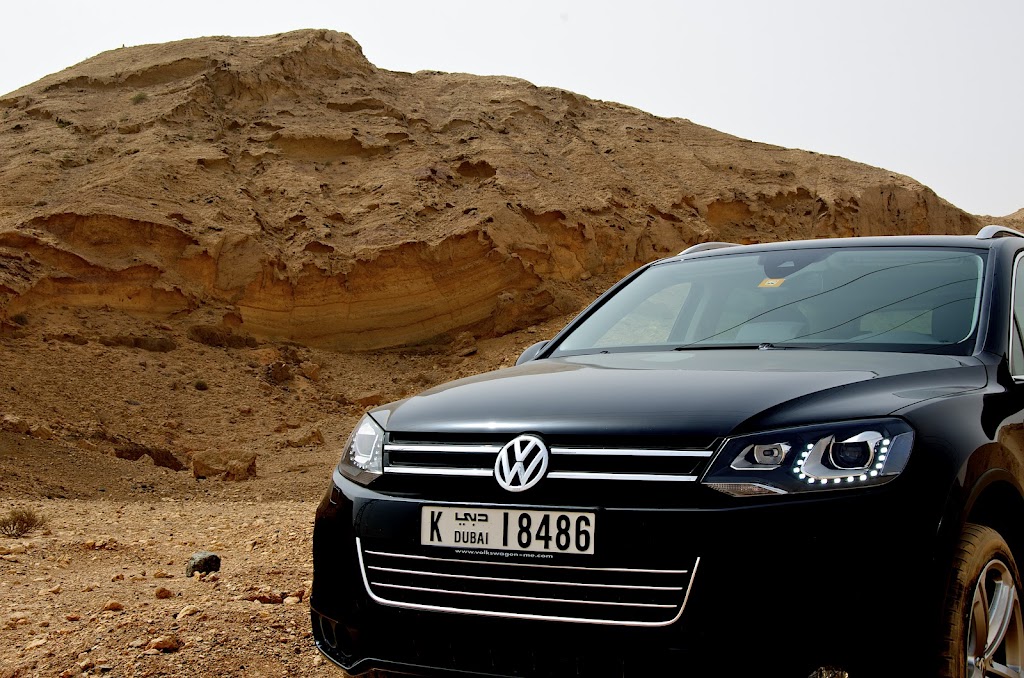
VW Touareg at Fossil Cliff - you can see how the cliff-face has collapsed from the escarpment, exposing millions of years of sedimentation from when the entire area was under the sea.
The VW Touareg took us there with poise and grace, looking very feline and aggressive in black – this was the R version, so twin-turbo V8 power and sporty suspension, which provided acceleration and speed far beyond the regular version: in fact, giving top-end German rivals a run for their money.
On the off-road track, and especially when leaving it to cross a stony plain, electrically adjusting the suspension height lifted the belly far enough to avoid any expensive scrapings, and so we were able to drive right up to our destination. Surprisingly, and awesomely, VW claims the Touareg “conquers steep inclines of up to 45 degrees or slopes half a metre under water,” which is very impressive for a vehicle that can cruise effortlessly at 180kph, handle F1 corners, and knock your head back under acceleration.
If you were in the market for a sports-oriented SUV, I would definitely suggest you visit the VW dealerships (in UAE, there are separate ones by region: VW Abu Dhabi and VW Dubai) – you will find it technologically at the cutting-edge, and aesthetically very pleasing.
The route does not specifically require a 4×4 vehicle, if you’re ok with crawling along a hard track for around 1km – the Touareg ate that up with gusto – no crawling there! In fact, it was over so fast, I had to repeat it several times 😉
Starting from Madam Roundabout, head north towards Al Dhaid. At the first small roundabout with a petrol pump on your left/west, take what seems to be a dead end due west, facing the mountain. The track will snake around right/north, cross a gated camel grid, and then run true west towards a tall red-and-white telecom tower. Fossil Cliff is 100m south of that tower.
Download the KML file for your GPS by clicking here.
Once downloaded, you can import the file into your GPS device by using GPSbabel to convert it to a format your GPS device likes, and then take it on the road with you; or double-click that file and it will open automatically in Google Earth if you have that installed (all adventurers should! Google Earth).
View Fossil Cliff in a larger map
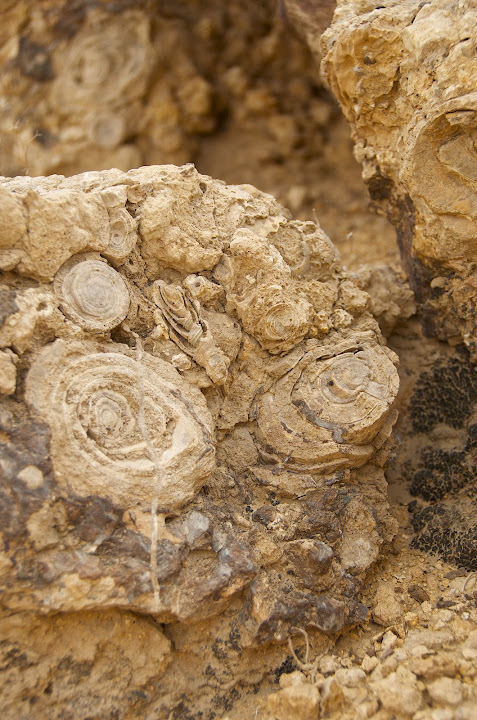
Finding seashell fossils embedded in the rocks in the middle of the desert clearly proves that you're now standing where the bottom of the sea used to be millions of years ago. Please do not remove the fossils - what will you do with them, anyways? Leave them in place for other visitors to admire.
- Examine a larger photo.
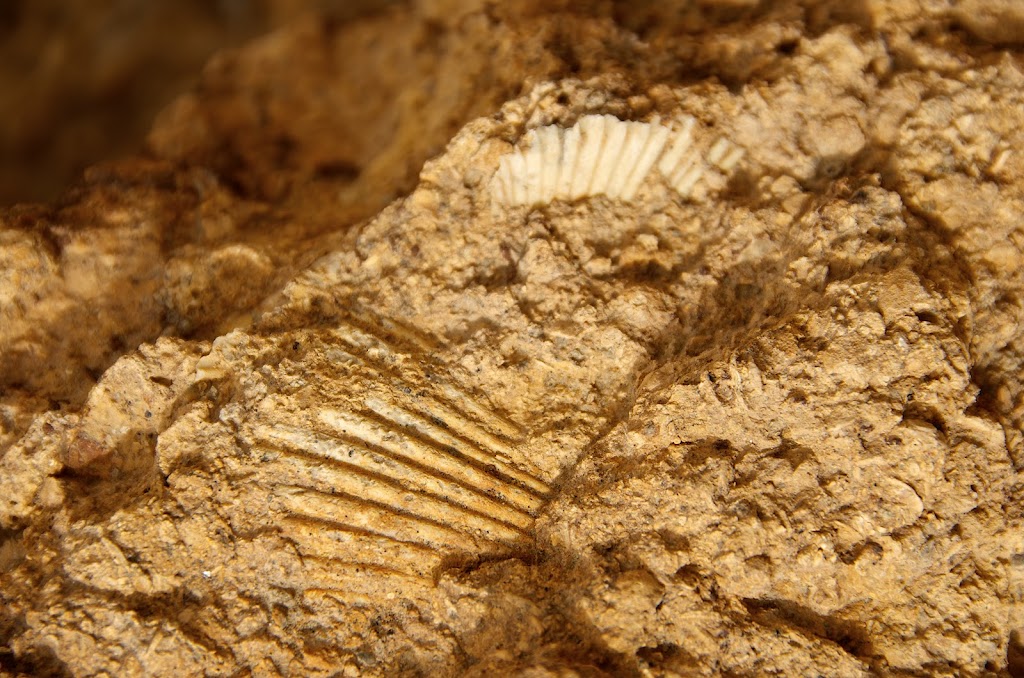
To quash that urge to dig the fossils out and take them home, as souvenirs to show friends, take a really good photo instead. I used to carry home all sorts of bits until I realized that not only I was ruining the environment, but it is so much easier to share photos than the real thing. Leave it to the museums to collect artefacts: our aim is to leave no trace of our visit.
We spotted a handsome donkey that was too proud to be coaxed near with food, and tracks of fox (seen on a previous visit). The entire escarpment is worth exploring, and some shade is available at the very bottom of the cliff in the mornings. Since the month of publishing is May, due to the summer temperatures, I would now aim to arrive at around 5pm and stay beyond dusk, which would be around 7pm. The sun will set facing the escarpment so that would be the best time for photos, and I prefer to arrive as the temperature starts dropping, rather than when it is climbing towards the daily highs.
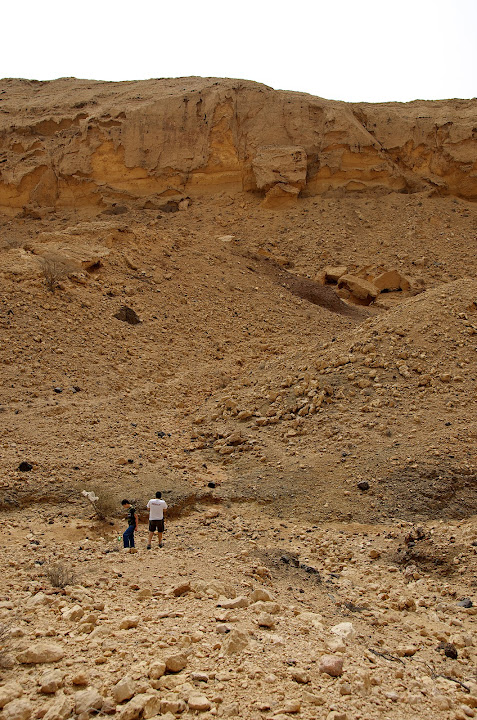
Sturdy shoes and water to carry, and off you go! I always also have my trusty sun hat with me.
As a primer before your trip, visit this site which non-scientifically describes the kinds of fossils you may find and provides plenty of photos. If you have school-age kids, definitely point them to that website so they can educate you on location!

The view from the cliff
By the way, the apparent ease of finding so many fossils just lying around also points to why the region is rich in oil. “Crude oil is formed from the decayed remnants of aquatic plants and animals that lived hundreds of millions of years ago. Large portions of the modern day Middle East were once submerged under a large, now non-existent sea called the Tethys Sea. This sea eventually disappeared, sealing large deposits of organic matter under a salty crust. Over the eons, this crust was in turn covered by layer upon layer of sediment. As the sediment was compressed under the increasing weight of the layers above, it hardened into limestone. About 15 million years ago, the shifting of tectonic plates of the region formed large, underground fissures. As the organic matter migrated through the layers of limestone, much of it seeped into these fissures. These deposits of organic matter became crude oil.” (Eric Fisher)
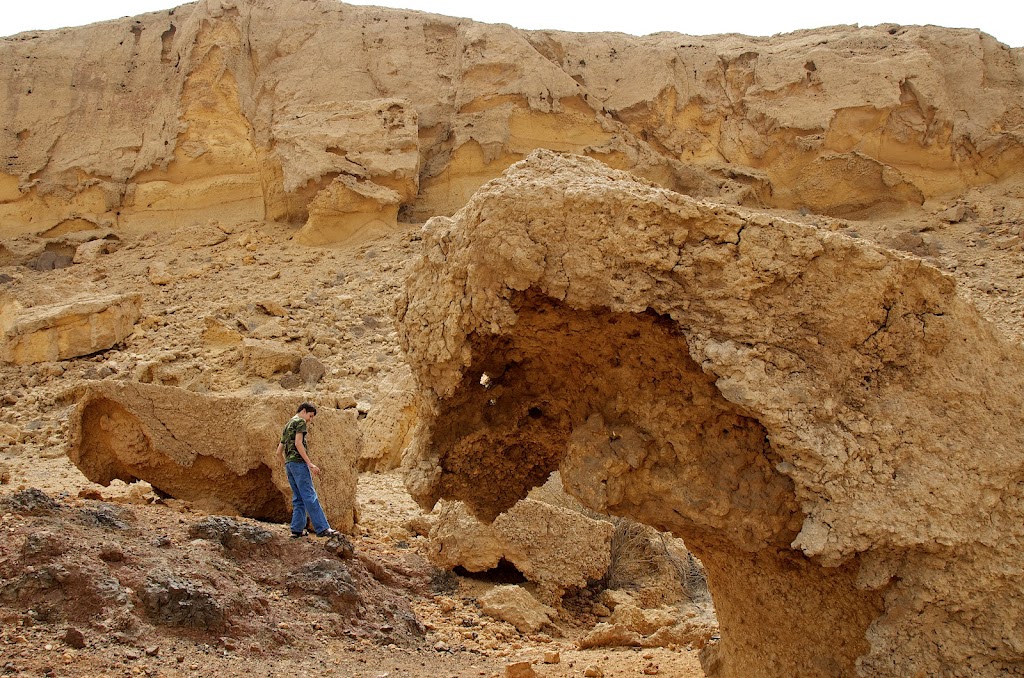
Luke Beem, 14, explores the large chunks of fossilized coral.
If you keep going west, along the telecom tower track from Fossil Cliff, you will pass through a tight track into the red sand dunes; so if you are ready for sand, there is some excellent driving to be had over there. Swing north and you can exit at Jebel Maleiha, or loop south and aim for Al Bidayer (Big Red) where you can expect much 4×4 traffic on the weekend, including wolf packs of crazy drivers zig-zagging all over the place.
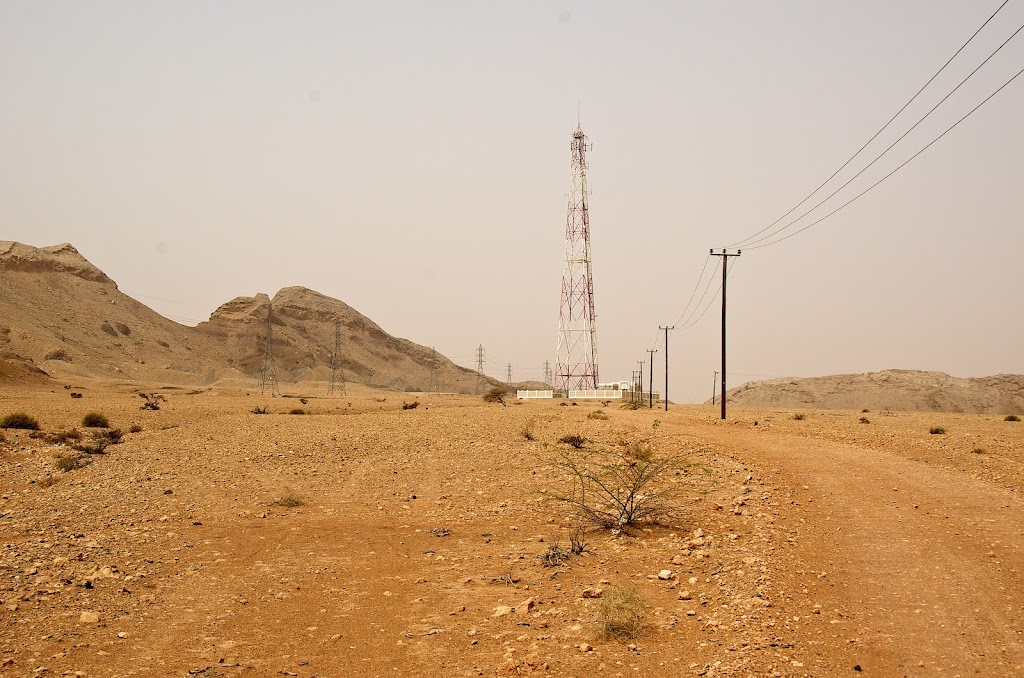
A telecommunications tower serves as a handy landmark on the way to Fossil Cliff.
Please make sure you read the Disclaimer and plan your trips with due care.

